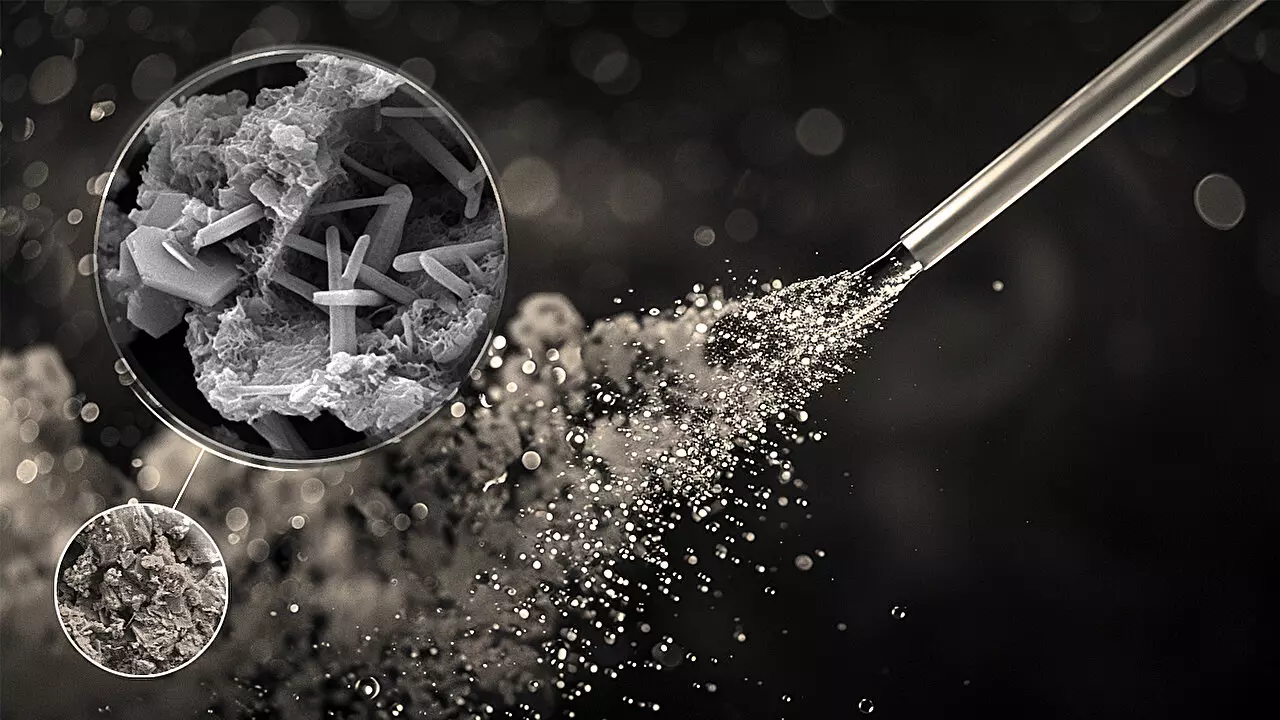In an era where climate change actions are paramount, the construction industry’s significant carbon footprint looms large. Accounting for a staggering 8% of global greenhouse gas emissions, the cement and concrete sectors have attracted intense scrutiny from environmentalists and scientists alike. With the world racing against time to reduce atmospheric carbon dioxide (CO2), innovative methods to convert these emissions into usable materials are becoming increasingly vital. Recent research led by engineers at Northwestern University has unveiled a transformative approach that not only promises to sequester CO2 but also enhances the properties of concrete—a substance so integral to modern infrastructure that it ranks second only to water in terms of global consumption.
A Game-Changing Process
The heart of this groundbreaking research lies in utilizing a carbonated water-based solution during the concrete manufacturing process. This technique allows for substantial CO2 capture—up to 45% during experiments—creating a unique opportunity to mitigate emissions right at the source. Unlike conventional methods, which either fail to efficiently capture CO2 or compromise the material’s structural integrity, Northwestern’s approach integrates the CO2 into the concrete mix itself. This innovation could potentially turn future concrete products into carbon sinks, striving towards a more sustainable construction ecosystem.
Led by Alessandro Rotta Loria, a professor of Civil and Environmental Engineering at Northwestern’s McCormick School of Engineering, this research underscores the need for methods that can symbiotically address both material performance and carbon emissions. By exploring the chemistry of concrete, the team worked closely with CEMEX, a global leader in building materials focused on sustainable solutions, to navigate the complex interplay between product durability and environmental responsibility.
How it Works: A Fresh Perspective
At first glance, one might wonder how a simple alteration in the water used for mixing could yield such promising results. The process involves injecting CO2 gas into water mixed with a small amount of cement powder before combining it with other aggregates. By leveraging a lower-viscosity suspension, this method allows for a rapid chemical reaction that results in solid calcium carbonate crystals, embedding CO2 directly into the concrete matrix. Traditional methods such as high-pressure gas injection into hardened concrete are not only energy-intensive but also often lead to a reduction in concrete strength—something that could endanger structural applications.
This innovative process represents a paradigm shift in how CO2 can be captured in concrete. As Rotta Loria articulates, enabling CO2 absorption during the manufacturing phase adds an extra layer of functionality to the common construction material. Rather than merely coating the concrete in carbon sinks, this method interweaves the carbon structurally, reinforcing the material and enabling it to serve a dual purpose as a building block and a carbon repository.
Strength and Sustainability: A Dual Achievement
One of the most compelling aspects of this research is the revelation that not only does the carbon capture occur effectively, but the resultant concrete is also robust and durable. Contrary to the common assumption that introducing carbon into the mix could weaken the concrete, lab tests suggest that the strength remains uncompromised—or perhaps even enhanced. This significant finding broadens the conceivable applications of carbonated concrete, allowing it to be used in beams, foundations, and other critical structural elements without any loss of performance.
As the study highlights, carbonation of cement-based materials is not a novel concept; however, it emphasizes that there is still room for optimization and innovation within existing methodologies. The researchers’ findings pave the way for the engineering of entirely new clinker-based products where CO2 is not an afterthought but rather an integral component of the material’s composition.
Implications for the Future of Construction
The implications of this research extend far beyond academic circles. If effectively implemented, this technology could revolutionize how we approach concrete production globally, leading to a significant decrease in the industry’s overall carbon emissions. The simplicity of the process makes it relatively easy for industries to adopt, significantly reducing the barriers to entry for widespread application. In a world that often prioritizes efficiency and cost over environmental sustainability, the promise of this new method offers a glimmer of hope and a blueprint for a greener future.
As we stand on the brink of a potential revolution in concrete technology, the challenge remains: will the industry embrace innovative methods that not only promise profitability but also the health of our planet? This research serves as a wake-up call, urging us to rethink traditional practices. By doing so, we can pave the way for a future where concrete contributes positively to the environment rather than detracting from it.


Leave a Reply